The origin of the Quan The Am festival - Ngu Hanh Son
From May 30 to June 2, Quan The Am Pagoda (Ngu Hanh Son District, Da Nang City) will be honored to be the place to enshrine Buddha's relics in the Central region. This is a major spiritual event within the framework of the United Nations Vesak 2025 - marking the first time Buddha's relics have been brought and enshrined in 5 localities across Vietnam, including Da Nang City.
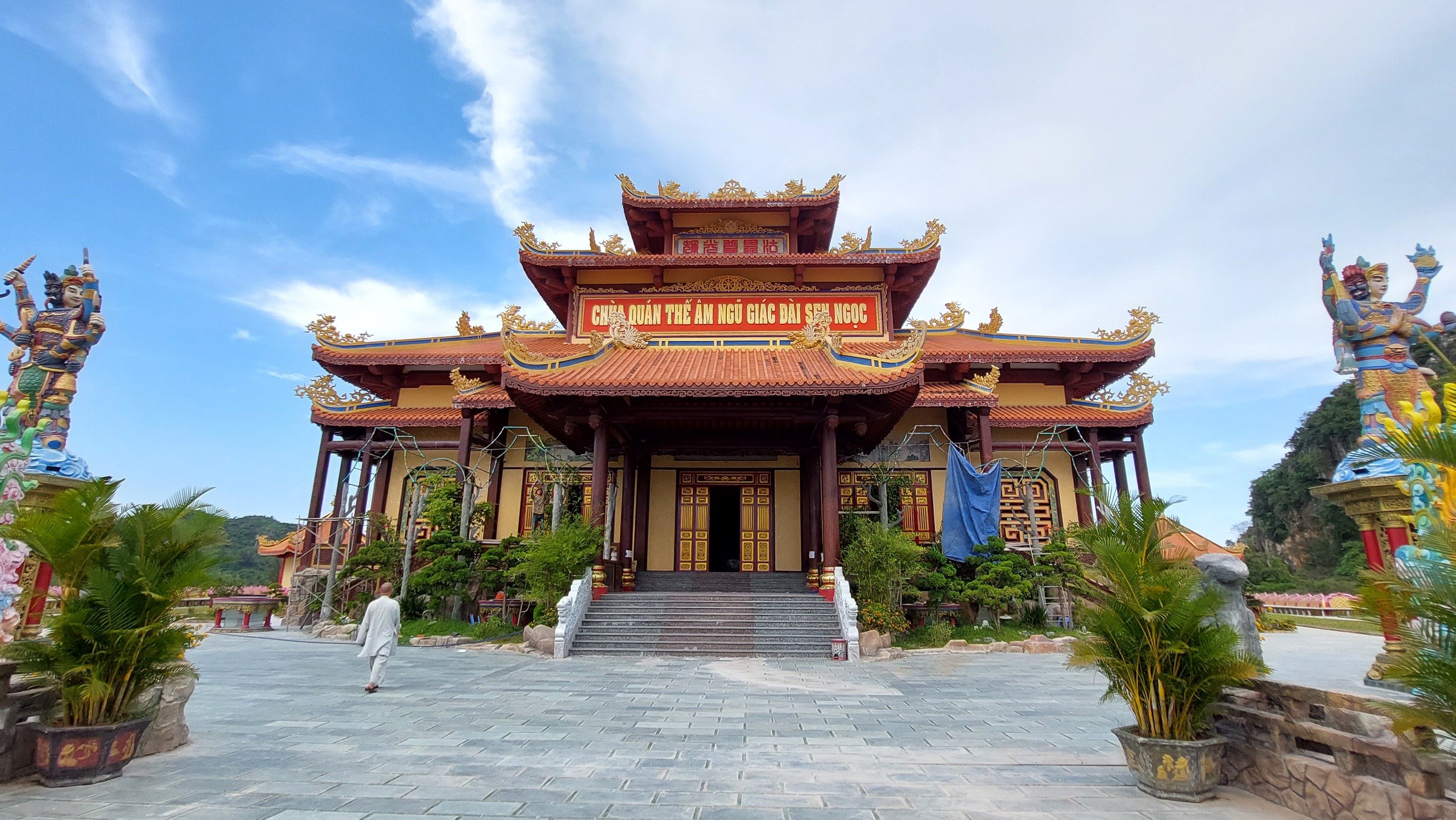
The Jade Lotus Pentagram of Quan The Am Pagoda will be the place to enshrine the Buddha's relics.
PHOTO: HOANG SON
Venerable Thich Hue Vinh, abbot of Quan The Am Pagoda, said that the pagoda associated with the Quan The Am festival was recognized as a national intangible cultural heritage by the Ministry of Culture, Sports and Tourism on February 3, 2021. The event of being chosen as the place to enshrine the Buddha's relics is an honor not only for the pagoda but also for many monks, nuns, Buddhists and people who wish to pay homage.
Going back in history, Venerable Thich Hue Vinh said that the festival was formed when Venerable Thich Phap Nhan discovered a statue of Quan The Am, made entirely of stalactite, holding a vase of nectar, as tall as a real person, in a cave on Kim Son mountain.
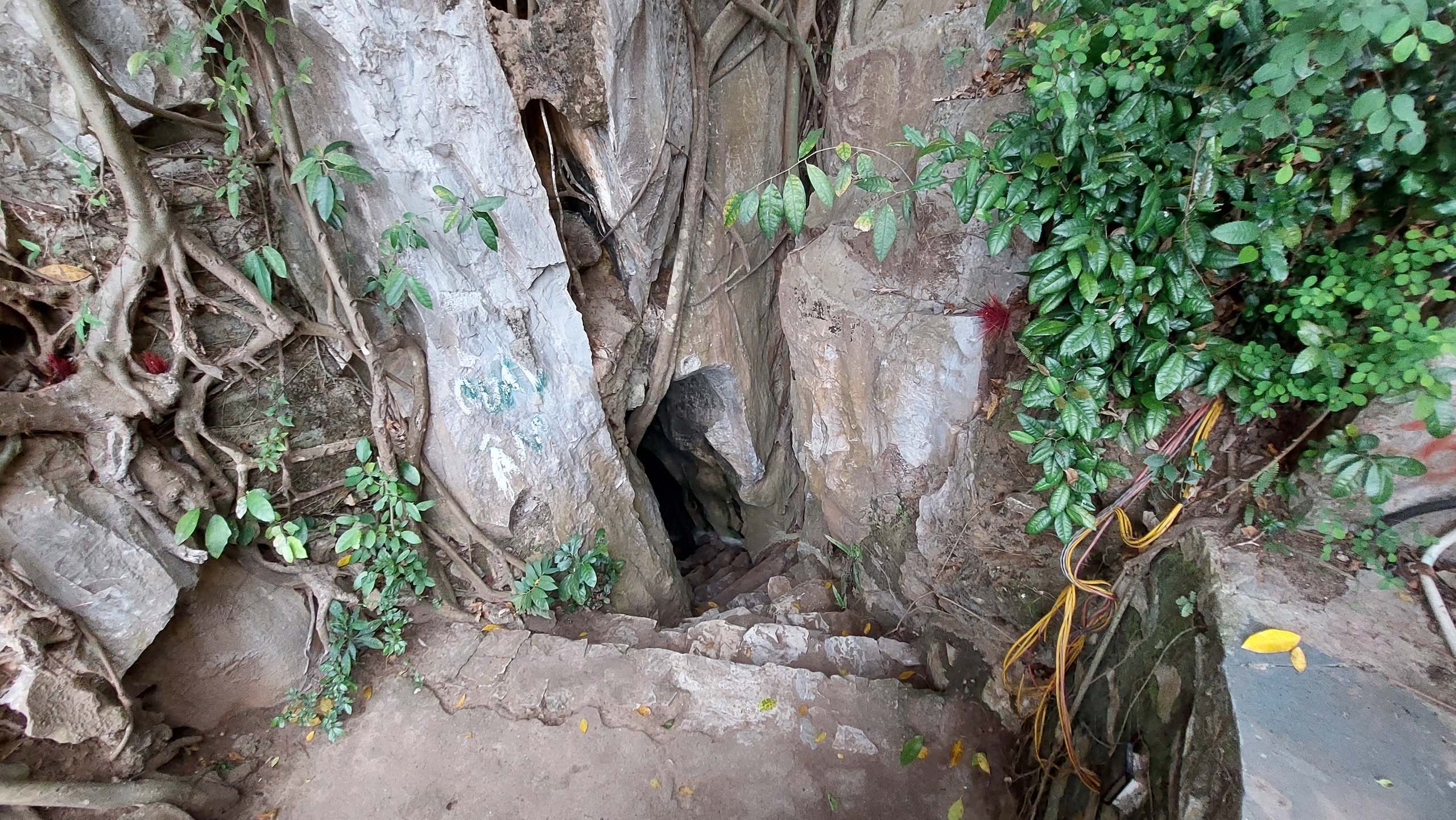
Entrance to the cave where the stalactite statue of Guanyin was discovered
PHOTO: HOANG SON
On February 19, 1956, on the occasion of the inauguration ceremony of Quan The Am Pagoda, Venerable Thich Phap Nhan founded the Quan Am Universal Association and became the head of the organizing committee for the Quan Am Festival at the pagoda.
Since 1991, the festival has been held on a large scale, taking place from the 17th to the 19th of the second lunar month. The 19th is the official holiday, including the Quan The Am festival; the Quan The Am statue procession; the Quan The Am costume ceremony...
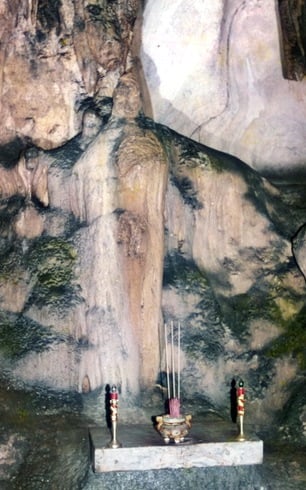
The stalactite statue of Guanyin is as tall as a real person.
PHOTO: HOANG SON
2025 is the third year that the Quan The Am festival is organized by Da Nang at the city level with many unique activities, bearing the spiritual and cultural imprints of Buddhism (taking place from March 16 to 19 - on the 17th and 20th of the second lunar month).
The highlight of the festival is the Bodhisattva Avalokitesvara's birthday ceremony - a ritual that is eagerly awaited by the people with the appearance of venerable monks, monks... along with a unique Avalokitesvara costume performance and the procession of the statue.
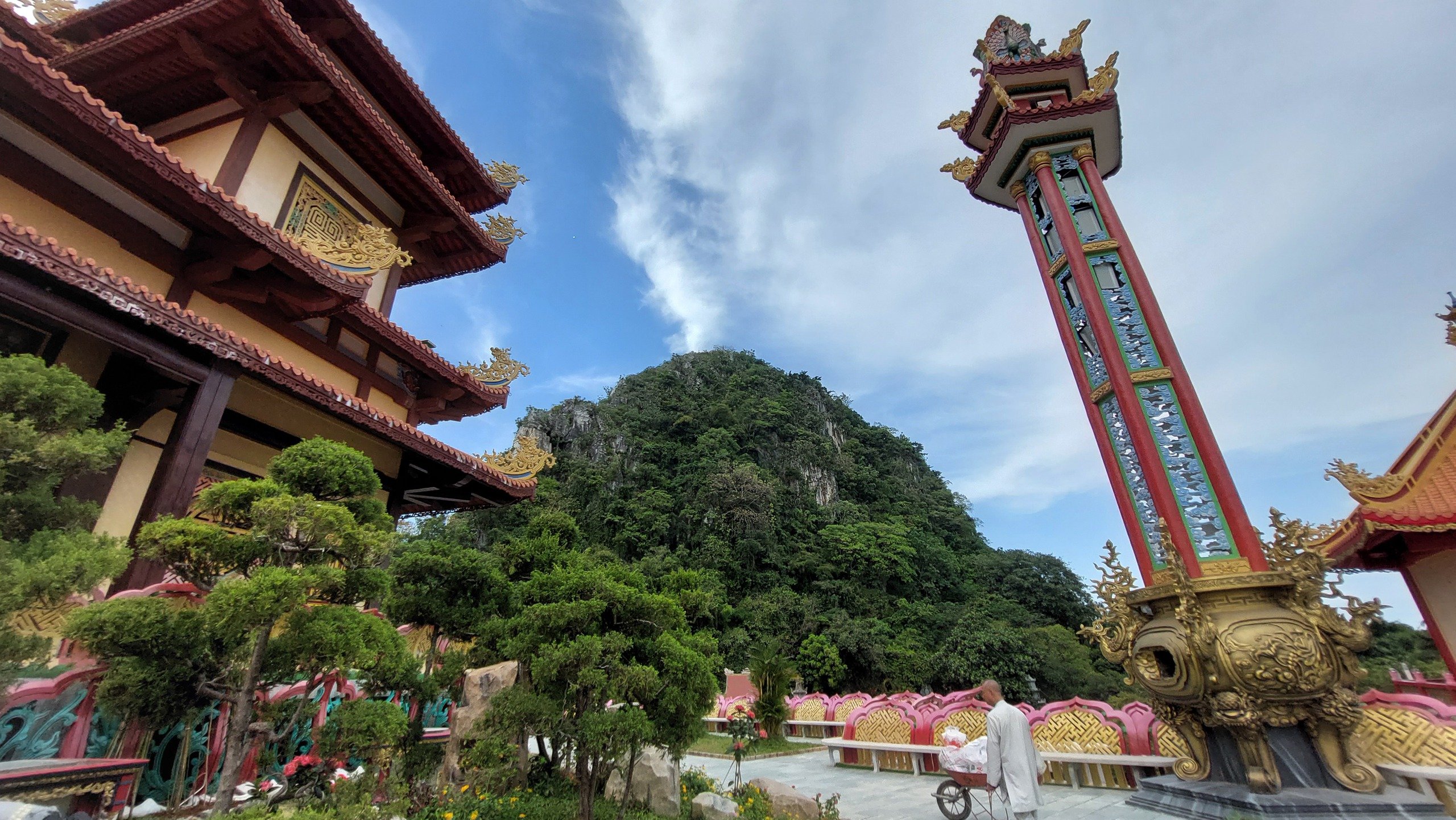
Kim Son peak where Quan The Am pagoda was located about 70 years ago is seen from the new pagoda, built a few years ago.
PHOTO: HOANG SON
According to the Department of Cultural Heritage, to recreate the image of Quan The Am, each year the temple will choose 1 of the 32 incarnations of Bodhisattva to transform into.
According to Chairman of Ngu Hanh Son District People's Committee Nguyen Hoa, from a purely Buddhist festival to honor the compassion and forgiveness of Bodhisattva Avalokitesvara, over time, Ngu Hanh Son Avalokitesvara festival has become one of the traditional folk festivals imbued with the identity of Buddhist beliefs.
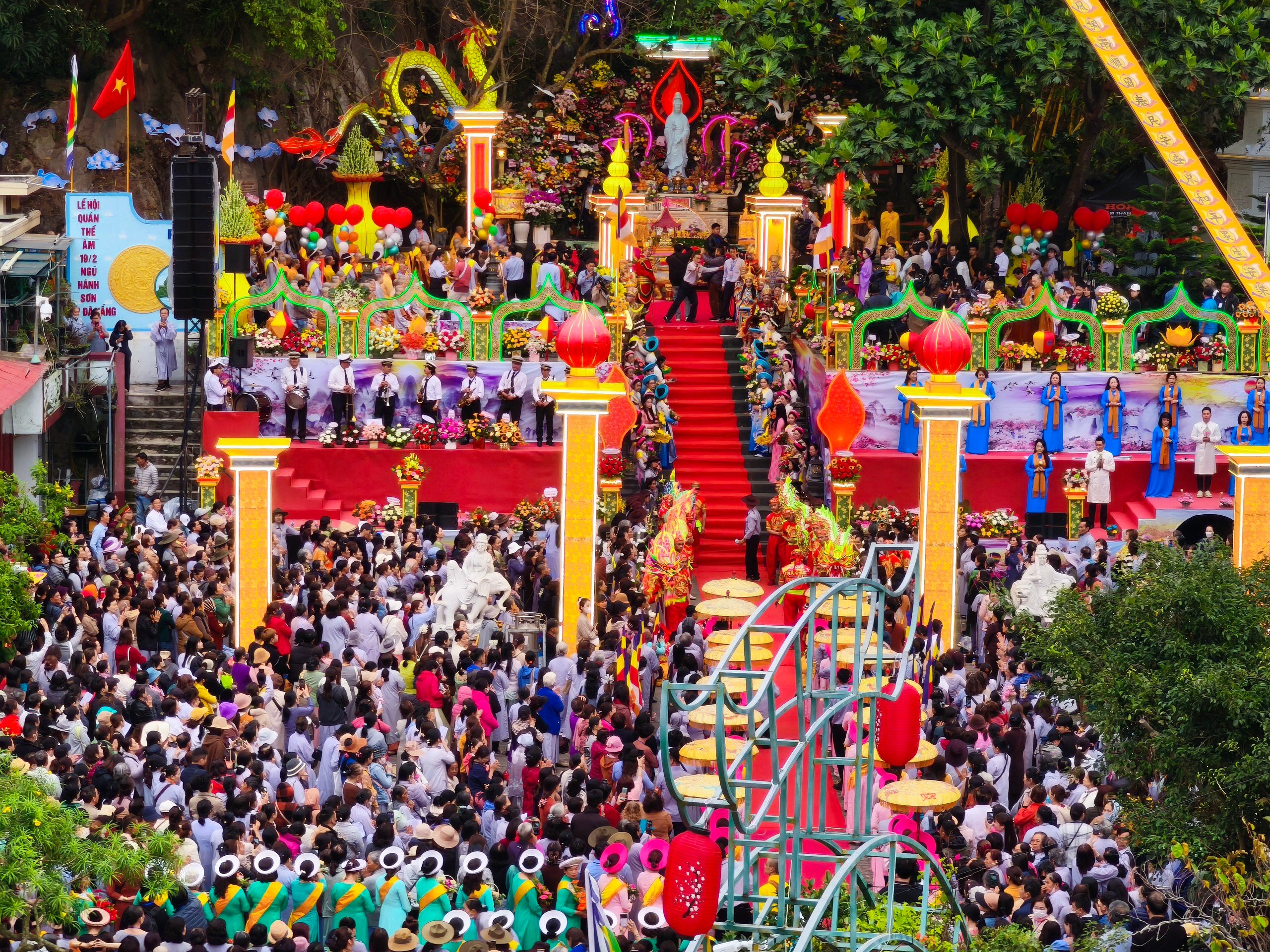
The Quan The Am Festival associated with the pagoda of the same name has become one of the largest spiritual festivals in the country.
PHOTO: HOANG SON
Associated with the majestic natural landscape of the special national monument Ngu Hanh Son - a priceless gift from nature, the Quan The Am festival is increasingly organized on a large scale with many rich activities, meeting the worship needs of Buddhist followers and attracting a large number of tourists.
The place where King Minh Mang visited Ngu Hanh Son three times
Located at the foot of Kim Son mountain - one of the mountains belonging to the special national monument Ngu Hanh Son, Quan The Am pagoda today has a frontage overlooking the poetic Co Co river which has been cleared of flow.
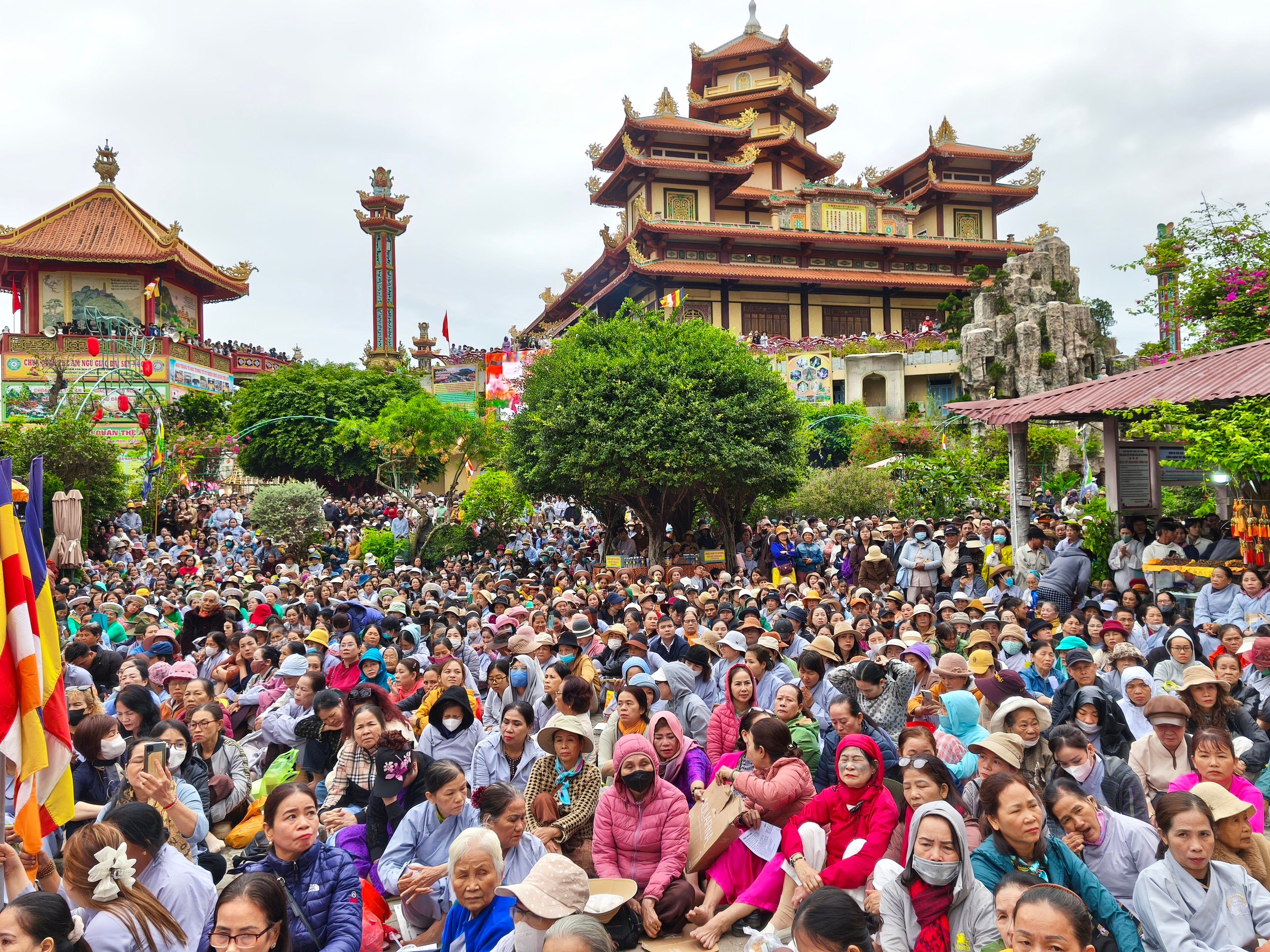
Quan The Am Pagoda - the place chosen to enshrine Buddha's relics - is an address that attracts many tourists and people to visit and worship.
PHOTO: HOANG SON
Many historical documents show that the Co Co River was once a vital waterway connecting Da Nang and Hoi An, where King Minh Mang visited Ngu Hanh Son three times. The royal wharf is said to be located in the area of the Co Co River flowing through Quan The Am Pagoda.
During the reign of King Minh Mang (reigning from 1820 - 1841), within 12 years, he traveled to Ngu Hanh Son 3 times.
The first time was in the 6th year of Minh Mang (1825), the royal boat arrived at Hoa Khue wharf for the king and his mandarins to visit the scenery. During this first visit to Ngu Hanh Son, the king ordered the construction of two steps up the mountain, including Tam Thai pagoda (now gate 1) and the path to Linh Ung pagoda (now gate 2). The king also conferred the title of Tam Thai pagoda and Linh Ung pagoda as national temples .
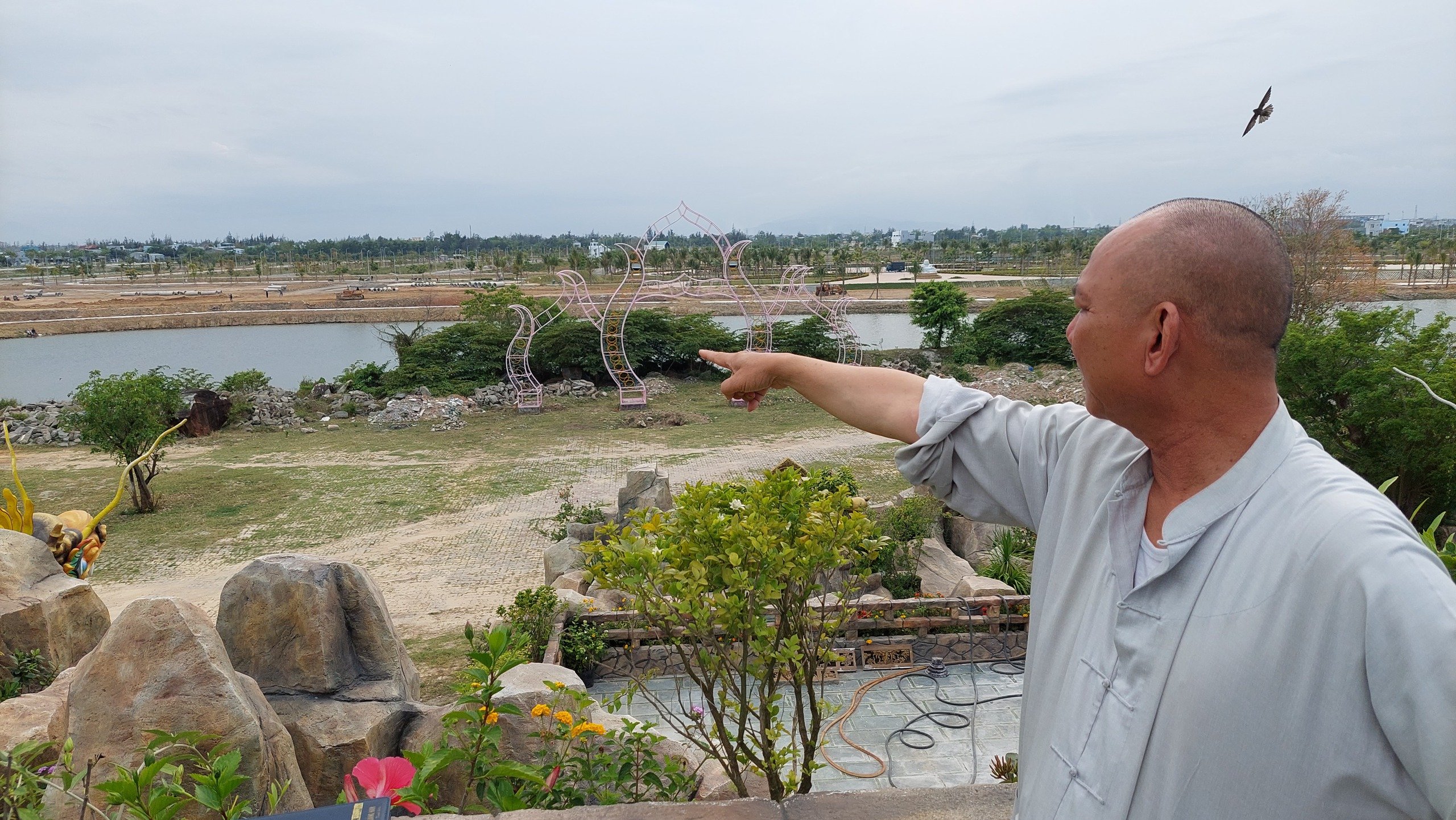
Venerable Thich Hue Vinh, abbot of Quan The Am Pagoda, told about the discoveries related to the place where King Minh Mang stopped to go ashore to visit Ngu Hanh Son.
PHOTO: HOANG SON
The second time he came to Ngu Hanh Son in the 8th year of Minh Mang (1827), the king ordered the casting of 9 statues and 3 large bells at Tam Thai pagoda.
The third time, in the 18th year of Minh Mang (1837), the king gave official names to the mountains corresponding to the five elements. Of which, the northeastern mountain (Tam Thai mountain) is Thuy Son, the three southwestern mountains are Moc Son, Duong Hoa and Am Hoa. The two western mountains are Tho Son and Kim Son. Also in 1837, the king ordered the erection of the Vong Giang Dai stele facing the Co Co River and the Vong Hai Dai stele facing the East Sea.
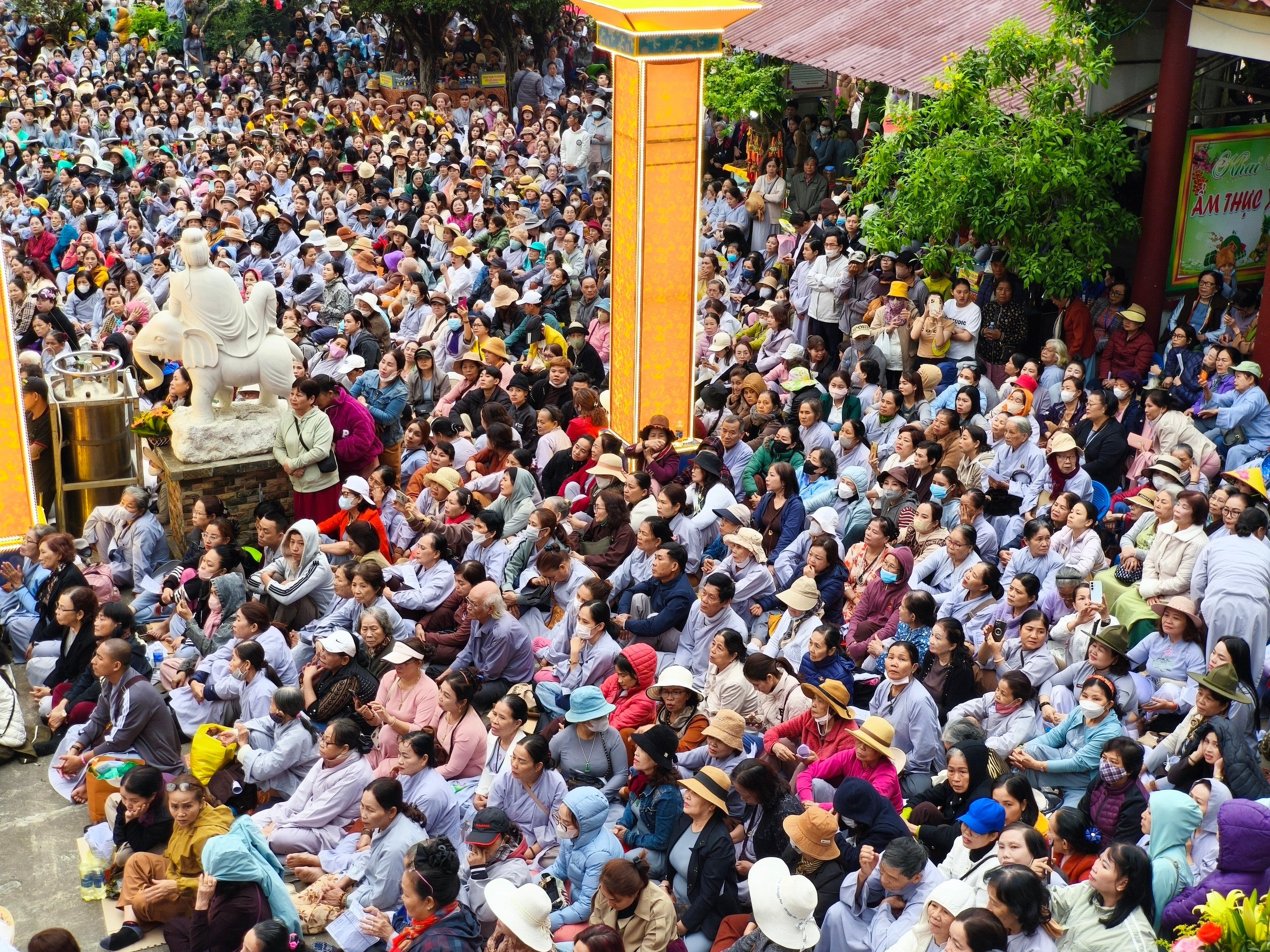
Chosen as the place to enshrine Buddha's relics, Quan The Am Pagoda is expected to welcome tens of thousands of monks, nuns, Buddhists and tourists to come and worship.
PHOTO: HOANG SON
Researcher Bui Van Tieng, Chairman of the Da Nang City Historical Science Association, said that it is likely that King Minh Mang visited Ngu Hanh Son three times by using the Co Co River.
Venerable Thich Hue Vinh, abbot of Quan The Am Pagoda, said that in 1987-1988, while working in the fields with the locals, he discovered a jet-black ironwood stake deeply embedded in the riverbank in front of the pagoda, suspected to be a stake used to tie the boat of the ancient royal procession.
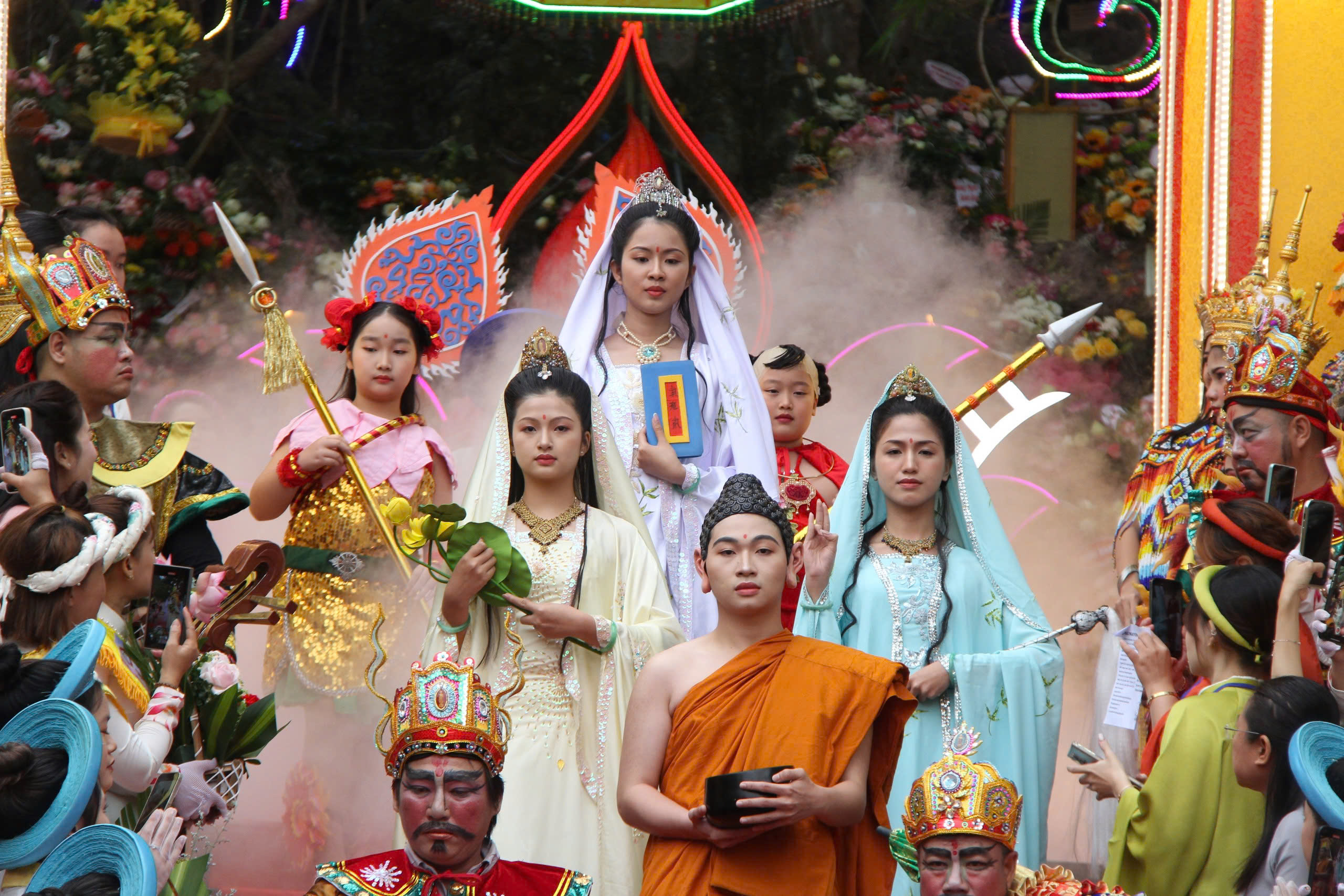
Images of Buddha and Bodhisattvas dressed up by Buddhists of Quan The Am Pagoda during the festival last March
PHOTO: HOANG SON
In addition, an ancient stone path was discovered in the temple grounds, most likely the path the king walked on. These evidences further strengthen the hypothesis about King Minh Mang's stop at Quan The Am Pagoda, a sacred stop by the ancient river.
Another legend related to the area where Quan The Am Pagoda is located is that in May of the year Dinh Mui 1307, the escort of Princess Huyen Tran returning from Champa docked at Co Co River and the princess may have stopped at Ngu Hanh Son area.
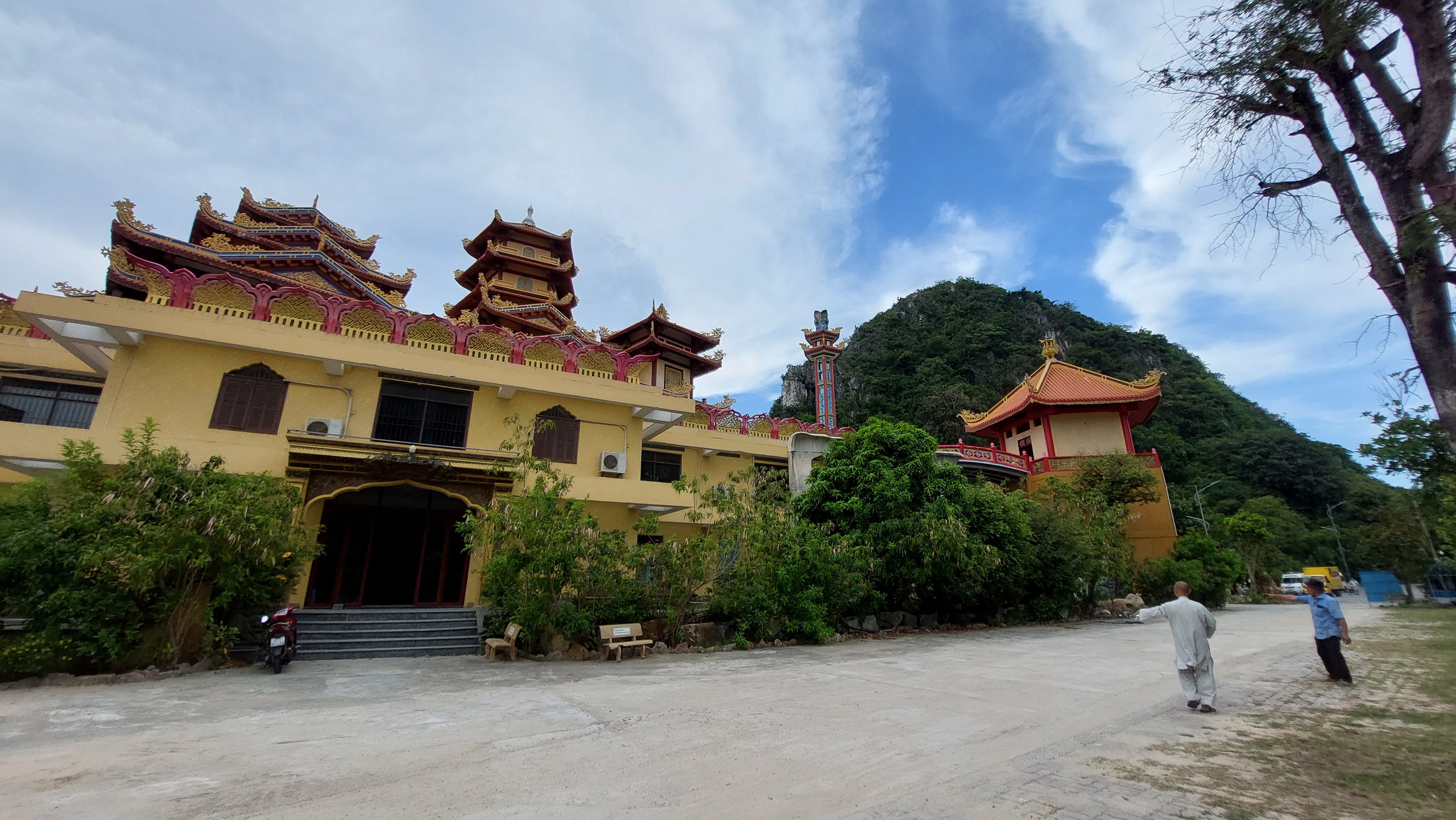
Quan The Am Pagoda is located in a convenient traffic location, the large-scale infrastructure of the pagoda is suitable for welcoming tens of thousands of people to worship Buddha's relics.
PHOTO: HOANG SON
This legendary bond has been preserved by local people through the generations, demonstrated through the establishment of temples to worship the princess at Ngu Hanh Son in the Kim Son area, which people often call Ba temple.
According to Venerable Thich Hue Vinh, abbot of Quan The Am Pagoda, although there are no completely authentic historical documents, the legend combined with the existence of the temple for many generations has become a sacred spiritual part of the land.
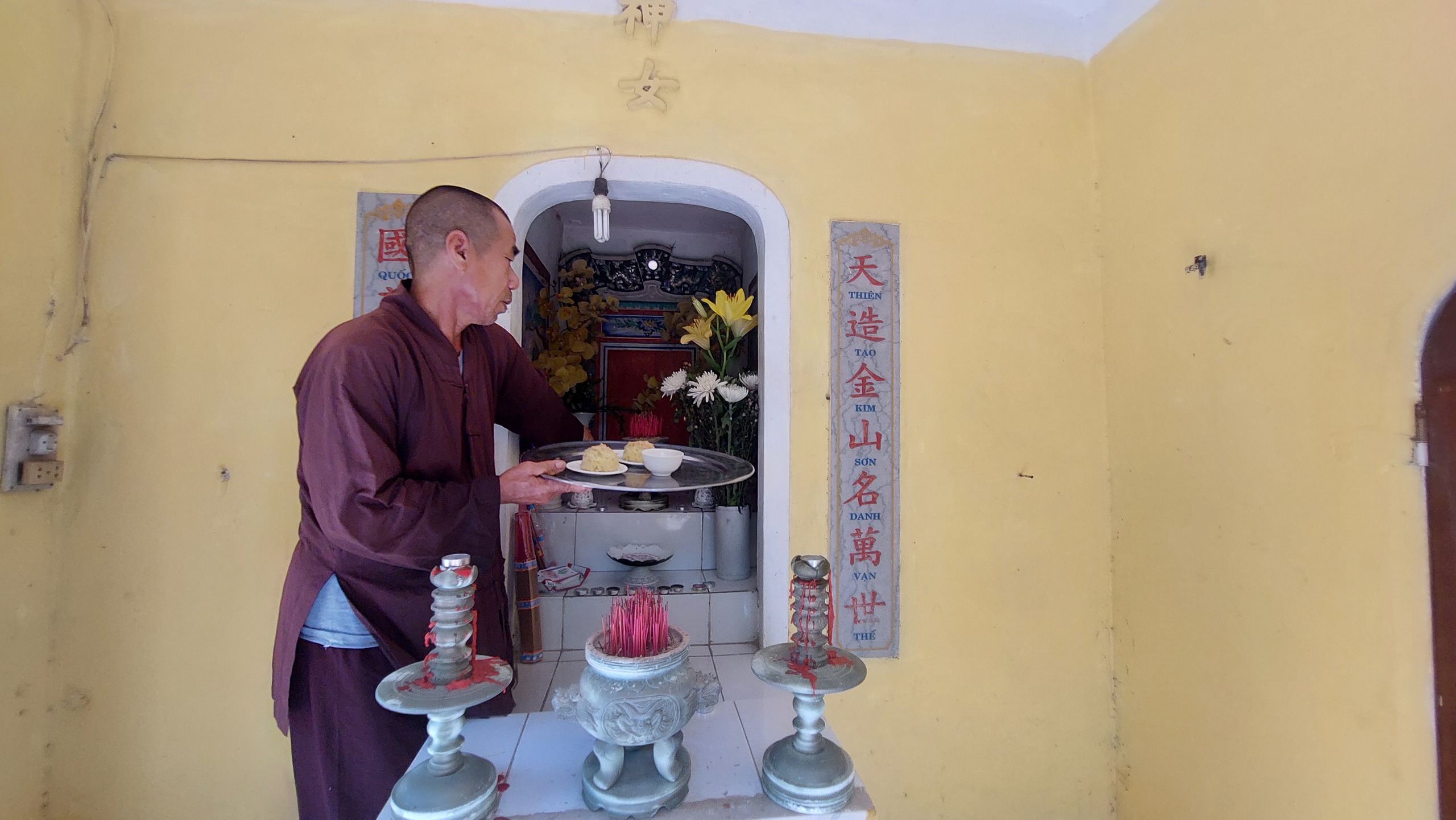
People worship Princess Huyen Tran at the temple built next to Kim Son mountain.
PHOTO: HOANG SON
Since 2017, in order to connect the cultural and historical depth with the Quan The Am festival activities, Venerable Thich Hue Vinh has visualized the journey to save Princess Huyen Tran in the traditional boat racing festival. The image of the Dai Viet navy taking the princess across the sea to return to her homeland, while the Champa army pursued from behind, was vividly recreated, creating drama and historical significance for the competition.
As the origin of the Quan The Am festival and the intersection of legends, history and indigenous culture, and being chosen as the place to enshrine the Buddha's relics, Quan The Am pagoda further demonstrates its sacred role associated with the special national monument of Ngu Hanh Son.
Source: https://thanhnien.vn/lai-lich-dac-biet-cua-ngo-chua-duoc-chon-ton-tri-xa-loi-duc-phat-185250527125712073.htm


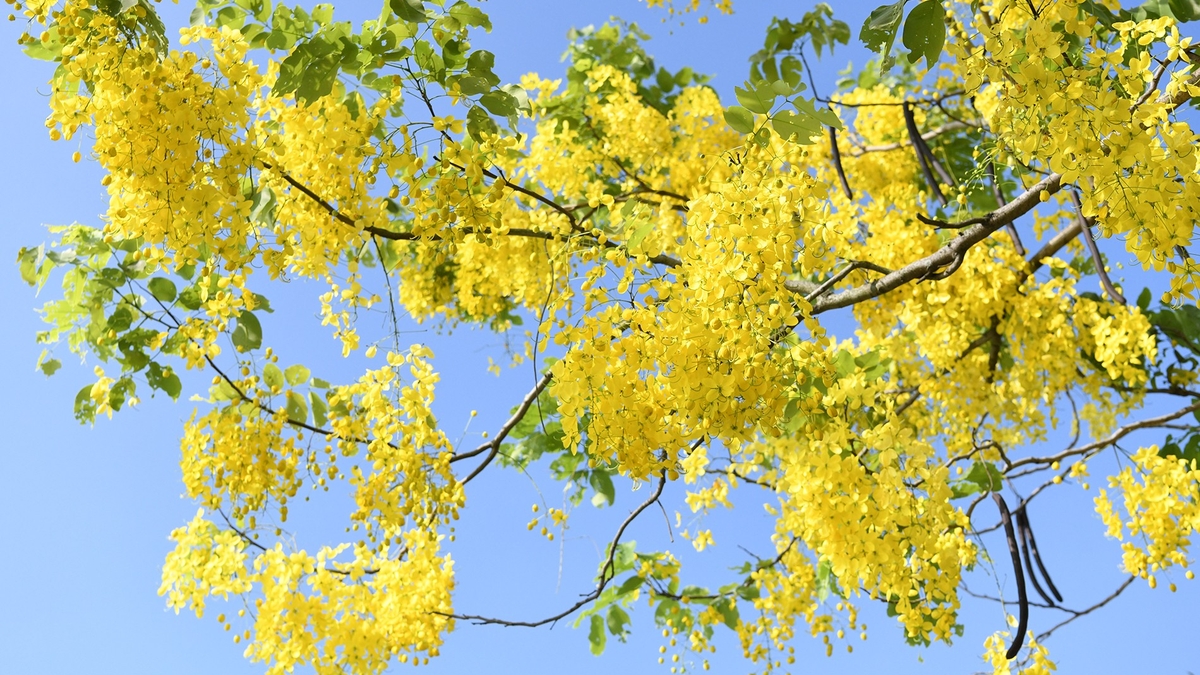

![[Photo] Prime Minister Pham Minh Chinh receives a bipartisan delegation of US House of Representatives](https://vphoto.vietnam.vn/thumb/1200x675/vietnam/resource/IMAGE/2025/5/28/468e61546b664d3f98dc75f6a3c2c880)

![[Photo] Vietnamese and Hungarian leaders attend the opening of the exhibition by photographer Bozoky Dezso](https://vphoto.vietnam.vn/thumb/1200x675/vietnam/resource/IMAGE/2025/5/29/94d8ceca5db14af3bf31285551ae4bb3)



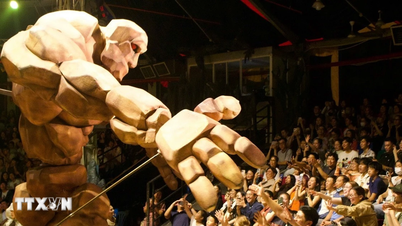

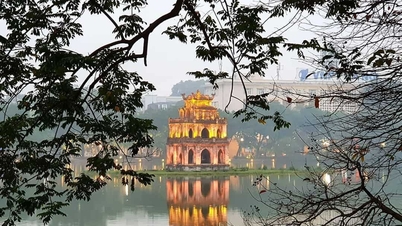



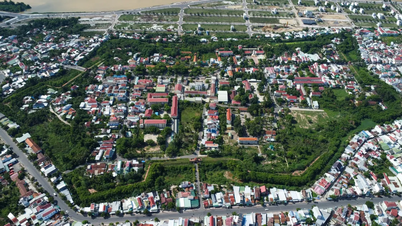











![[Photo] 12th grade students say goodbye at the closing ceremony, preparing to embark on a new journey](https://vphoto.vietnam.vn/thumb/1200x675/vietnam/resource/IMAGE/2025/5/28/42ac3d300d214e7b8db4a03feeed3f6a)





















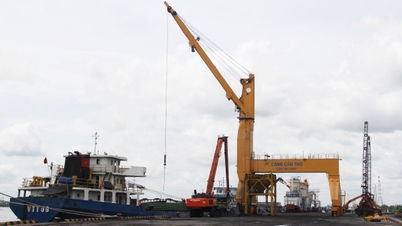









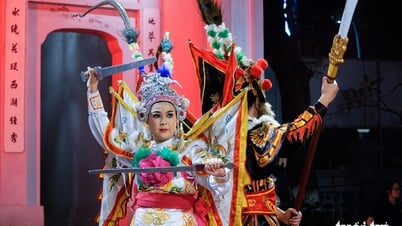

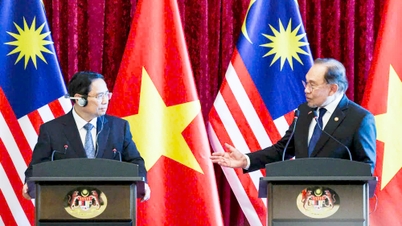

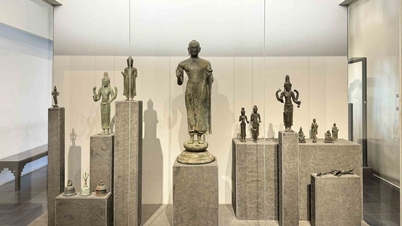
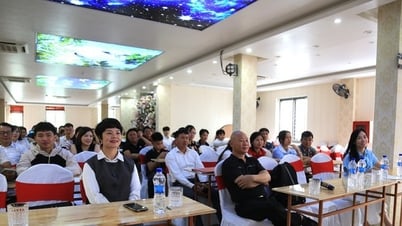
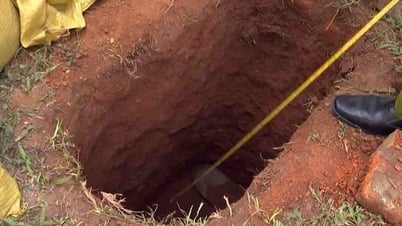


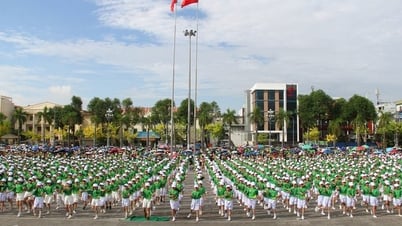
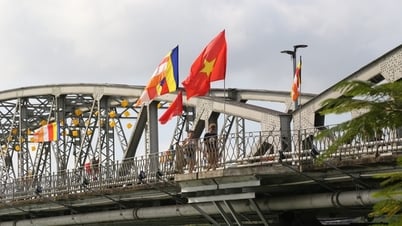


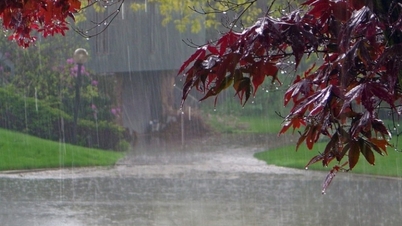



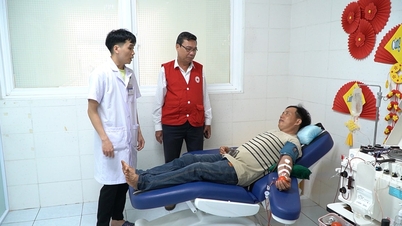

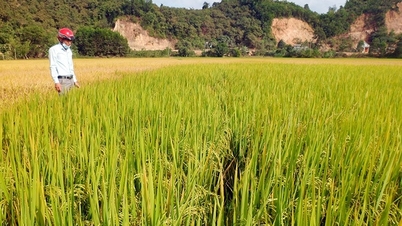

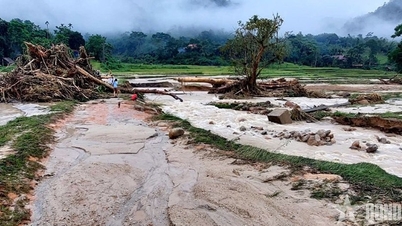










Comment (0)